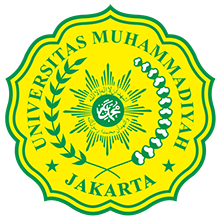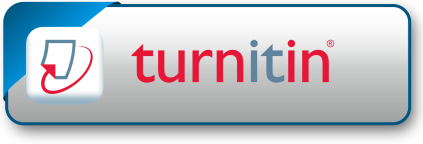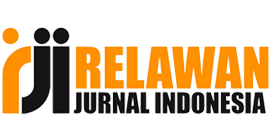Environmental Burden Computation in White Crystal Sugar Industry using the Life Cycle Assessment Methods
Abstract
Life Cycle Assessment (LCA) is used to assess environmental impacts that can potentially result from an industrial activity, from cradle to grave. LCA assessment in accordance with the principles of ISO 14040 is carried out starting from the stage of determining the scope, collecting data, preparing the Life Cycle Inventory (LCI), formulating the Life Cycle Impact Assessment (LCIA), interpretation and presentation. At the LCI stage, data from a sugar factory studied is collected from the results of material balance analysis, exhaust gas analysis, liquid waste analysis, and solid waste calculations for the 2019 period. Life Cycle Impact Assessment characterizes each LCI data towards potential environmental impacts that are make it possible. Characterization was carried out by grouping the impacts on Energy Depletion Potential (EDP), global warming (GWP), Eco toxicity aquatic (ETA), terrestrial Eco toxicity (ETT), Abiotic Depletion Potential (ADP), Photochemical Oxydant Formation (POF), Acidification Potential (ACP) , Human Toxicity Potential (HTP), Nutrification Potential (NTP), Ozone Depletion Potential (ODP). The fourth largest contribution to the environmental burden of sugar factories based on 2019 data is GWP 375,966.95 tons of CO2 equivalent, followed by ACP 89,183.03 tons equivalent to NOx, EDP worth 33,086.91 tons of fuel oil equivalent, and NTP of 14,598.66 tons equivalent to COD . In addition, it also needs attention, namely HTP 11,621.83 tonnes equivalent to phenol, ETA 11,163.18 tonnes equivalent to BOD5, and ETT 9,748.49 tonnes equivalent to ash.
Keywords
Full Text:
PDFReferences
Astuti, A.D. (2019). Potential Analysis Of Environmental Impact Of Sugarcane Plantation Using Life Cycle Assessment (LCA) Approach. Jurnal Litbang Vol. XV No.1 Juni 2019 Hal 51-64
Badan Pusat Statistik. (2019). Neraca Gula Nasional. BPS, Jakarta.
Chaerul,M. dan V. Allia. (2020). Tinjauan Kritis Studi Life Cycle Assessment (LCA) di Indonesia. Serambi Engineering, Volume V, No. 1 Januari 2020:816- 823
Chandra, V.V., O. Mwabonje, S.L. Hemstock, A.D.N ‘Yeurt, and J. Woods. (2018). Life Cycle Assessment on Sugarcane Growing Process in Fiji. Sugar Tech (2018) 20(6):692-699 DOI 10.1007/s12355-018-0607-1. 692-699
Gunawan, T. Bantacut, M. Romli and E. Noor. (2019). Life Cycle Assessment of Cane-sugar in Indonesian Sugar Mill: Energy Use and GHG Emissions. IOP Conf. Series: Materials Science and Engineering 536 (2019) 012059 doi:10.1088/1757-899X/536/1/012059. 1-8.
Hampannavar, U. dan Shivayogimath, C. (2010). Anaerobic treatment of sugar industry wastewater by Upflow anaerobic sludge blanket reactor at ambient temperature. International Journal Of Environment, 1(4), 631–639.
Hasanudin, U. E. Suroso dan Hartono. 2013. Kajian Efektifitas Penggunaan Tanaman Enceng Gondok (Eichornia crassipes) dalam Menurunkan Beban Pencemar Air Limbah Industri Gula Tebu. Jurnal Teknologi Industri dan Hasil Pertanian Volume 18 No.2, September 2013. 157-167.
Hasibuan, S. dan Hermawan T. (2015). GAP Analysis Rancangan Implementasi Sistem Manajemen Mutu ISO 9001:2008 pada Industri Gula. Prosiding Seminar Nasional Sains, Rekayasa, dan Teknologi 2015. 6-7 Mei 2015
Hasibuan, S dan Hermawan T. (2017). Life Cycle Impact Assessment Produksi Biodiesel Sawit Untuk Mendukung Keberlanjutan Hilirisasi Industri Sawit Indonesia. Prosiding Seminar Nasional Inovasi dan Aplikasi Teknologi di Indonesia 2017. ISSN 2085-4218
Hischier, R. and Bo Weidema (Ed.). (2010). Implementation of Life Cycle Impact Assessment Methods Data v2.2 (2010). Swiss Centre for Life Cycle Inventories, Dübendorf.
ISO 14045. 2012. Environmental Management – Eco efficiency assessment of product systems- principles, requirements, and guidelines. ISO Secretariate, Geneva.
Kurniasari, H.D., R.A. Fatma, dan J. Aldomoro S. R. (2019). Analisis Karakteristik Limbah Pabrik Gula (Blotong) Dalam Produksi Bahan Bakar Gas (BBG) Dengan Teknologi Anaerob Biodigester Sebagai Sumber Energi Alternatif Nasional. Jurnal Sains dan Teknologi Lingkungan Vol.11:2. 102-113.
Muhsin, A. (2011). Pemanfaatan Limbah Hasil Pengolahan Pabrik Tebu Blotong Menjadi Pupuk Organik. Industrial Engineering Conference 2011, 5 November 2011. 1-1 – 1-9
Paramitadevi, Y.V. , R. Nofriana, dan A. Yulisa. (2017). Penerapan Produksi Bersih Dalam Upaya Penurunan Timbulan Limbah Cair Di Pabrik Gula Tebu. Jurnal Presipitasi : Media Komunikasi dan Pengembangan Teknik Lingkungan, Vol. 14 No.2. 54-61.
Rahmawati,R. E. S. Rahayu dan S. W. Ani. (2017). Analisis Penerapan Economic Order Quantity (EOQ) Di Pabrik Gula Madukismo Bantul. Caraka Tani: Journal of Sustainable Agriculture. 32(2), 126-131
Renouf, M.A., M. Poggio, A. Collier, N. Price, B.L.Schroeder and P.G. Allshopp. (2018). Customised life cycle assessment tool for sugarcane (CaneLCA)— a development in the evaluation of alternative agricultural practices. Int J Life Cycle Assesst. https://doi.org/10.1007/s11367-018-1442-z
Rhofita, E.I. and A. E. Russo. (2019). Efectiveness Performance of Sugar Cane Industry Waste Water Treatment (WWTP) in Kediri and Sidoarjo Regency. Jurnal Teknologi Lingkungan Vol. 20:2, 235-242.
Rosmeika, L. Sutiarso, B. Suratmo. (2010). Pengembangan Perangkat Lunak Life Cycle Assessment (LCA) Untuk Ampas Tebu. AGRITECH, Vol. 30, No. 3, 168-177.
Skone, T.J. (2013). Power Generation Technology Comparison from a Life Cycle Perspective. US Departement of Energy, Washington DC.
Subiyanto. (2014). Analisis Efektifitas Mesin/Alat Pabrik Gula Menggunakan Metode Overall Equipments Effectiveness. Jurnal Teknik Industri, Vol. 16, No. 1, 41-50
Trisnawati, N. O. Novareza, dan A. Eunike. (2016). Inventory Control Of Critical Spare Part Based On FNS Analysis (Case Study: PG Krebet Baru I, Malang). JEMIS VOL. 4 NO. 1 TAHUN 2016. 11-18.
Ummah, M. dan H.A. N. Hidayah. (2018). Efektivitas Instalasi Pengolahan Air Limbah Industri Gula PT. X di Kabupaten Kediri Jawa Timur. Window of Health: Jurnal Kesehatan, Vol. 1 No. 3 (Juli, 2018). 260-268.
Yani, M., I. Purwaningsih dan M. N. Munandar. (2012). Life Cycle Assessment Of Sugar At Cane Sugar Industry. E-Jurnal Agroindustri Indonesia Juli 2012. Vol. 1 No. 1, 60-67
DOI: https://doi.org/10.24853/jasat.3.2.35-44
Refbacks
- There are currently no refbacks.
Copyright of Journal of Applied Sciences and Advanced Technology (JASAT)


![]()
This work is licensed under a Creative Commons Attribution-NonCommercial 4.0 International License















_2.png)


1.png)

2.png)



